
Harvey Washington Wiley was an American chemist who advocated successfully for the passage of the landmark Pure Food and Drug Act of 1906 and subsequently worked at the Good Housekeeping Institute laboratories. He was the first commissioner of the United States Food and Drug Administration.

The American Chemical Society (ACS) is a scientific society based in the United States that supports scientific inquiry in the field of chemistry. Founded in 1876 at New York University, the ACS currently has more than 155,000 members at all degree levels and in all fields of chemistry, chemical engineering, and related fields. It is one of the world's largest scientific societies by membership. The ACS is a 501(c)(3) non-profit organization and holds a congressional charter under Title 36 of the United States Code. Its headquarters are located in Washington, D.C., and it has a large concentration of staff in Columbus, Ohio.
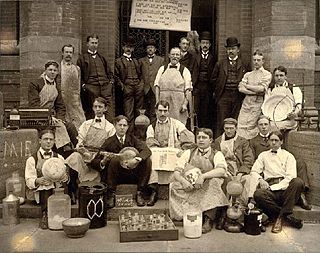
Sheffield Scientific School was founded in 1847 as a school of Yale College in New Haven, Connecticut, for instruction in science and engineering. Originally named the Yale Scientific School, it was renamed in 1861 in honor of Joseph E. Sheffield, a railroad executive. The school was incorporated in 1871. The Sheffield Scientific School helped establish the model for the transition of U.S. higher education from a classical model to one which incorporated both the sciences and the liberal arts. Following World War I, however, its curriculum gradually became completely integrated with Yale College. "The Sheff" ceased to function as a separate entity in 1956.

Oliver Wolcott Gibbs was an American chemist. He is known for performing the first electrogravimetric analyses, namely the reductions of copper and nickel ions to their respective metals.
The Society of Chemical Industry (SCI) is a learned society set up in 1881 "to further the application of chemistry and related sciences for the public benefit".

The William Albert Noyes Laboratory of Chemistry, located on the campus of the University of Illinois Urbana-Champaign at 505 S. Mathews Avenue in Urbana, Illinois, United States, was built in 1902 as the "New Chemical Laboratory", and was designed by Nelson Strong Spencer in the Richardsonian Romanesque style. Founded in 1867, the Chemistry Department was the first department of the university to move into its own building in 1878. When the department outgrew that building, department head Arthur W. Palmer convinced the state legislature to build a new lab, with 77,884 square feet of usable space, at a cost of under $100,000.

William Henry Perkin Jr., FRS FRSE was an English organic chemist who was primarily known for his groundbreaking research work on the degradation of naturally occurring organic compounds.

The National Historic Chemical Landmarks program was launched by the American Chemical Society in 1992 to recognize significant achievements in the history of chemistry and related professions. The program celebrates the centrality of chemistry. The designation of such generative achievements in the history of chemistry demonstrates how chemists have benefited society by fulfilling the ACS vision: Improving people's lives through the transforming power of chemistry. The program occasionally designates International Historic Chemical Landmarks to commemorate "chemists and chemistry from around the world that have had a major impact in the United States".

Allen Hall at the University of Pittsburgh is a Pittsburgh History and Landmarks Foundation Historic Landmark and a contributing property to the Schenley Farms National Historic District. Completed in 1914 and originally serving as the home to the Mellon Institute of Industrial Research, the six-story Greek Revival building designed by J. H. Giesey now serves as the home of the university's Department of Physics and Astronomy.
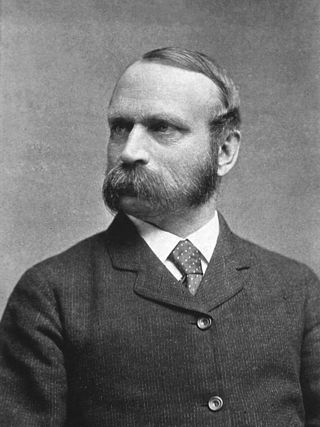
Charles Frederick Chandler was an American chemist, best known for his regulatory work in public health, sanitation, and consumer safety in New York City, as well as his work in chemical education—first at Union College and then, for the majority of his career, at Columbia University, where he taught in the Chemical Department, the College of Physicians and Surgeons, and served as the first Dean of Columbia University's School of Mines.

William Francis Hillebrand was an American chemist.
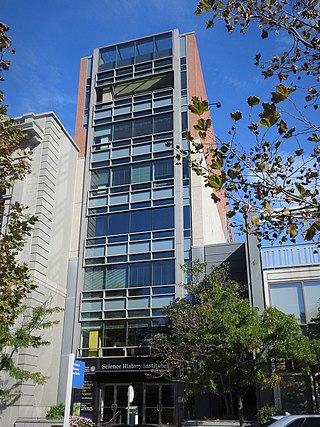
The Science History Institute is an institution that preserves and promotes understanding of the history of science. Located in Philadelphia, Pennsylvania, it includes a library, museum, archive, research center and conference center.
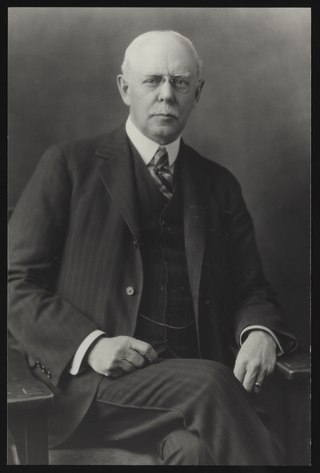
Arthur Dehon Little was an American chemist and chemical engineer. He founded the consulting company Arthur D. Little and was instrumental in developing chemical engineering at the Massachusetts Institute of Technology (MIT). He is credited with introducing the term unit operations to chemical engineering and promoting the concept of industrial research.
Milton C. Whitaker (1870-1963) was a noted 20th-century chemist. His areas of speciality were chemical engineering and industrial chemistry.

Charles James was a chemist of British origin working in the United States. He became a professor and head of the chemistry department at the New Hampshire College of Agriculture and the Mechanic Arts in Durham, New Hampshire, US.
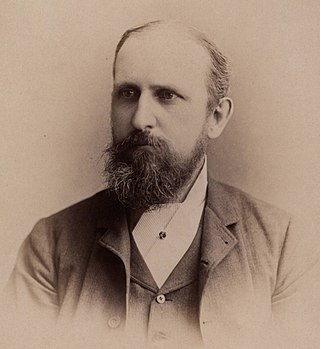
William Henry Chandler was an American chemist.

William McMurtrie was an American chemist. His work helped launch the sugar beet industry in the United States.

The Department of Chemistry at the University of Manchester is one of the largest Departments of Chemistry in the United Kingdom, with over 600 undergraduate and more than 200 postgraduate research students.
The Association of Greek Chemists is the chemical society of Greek chemists. The Association of Greek Chemists is a public legal entity that reports to the Ministry of Industry, Energy and Technology.
The Society of Chemical Industry (America Section) or SCI America is an independent learned society inspired by the creation of the Society of Chemical Industry (SCI) in London in 1881. Originally known as the New York Section, it was formed in 1894 and officially renamed the America Section in 1919. The main activity of the America Section is the awarding of several prizes in chemistry: the Perkin Medal, the Chemical Industry Medal and the Gordon E. Moore Medal. The America Section also works with the American Chemical Society (ACS) and the American Institute of Chemical Engineers (AIChE) to support underserved and Black scholars in chemistry and chemical engineering.

























